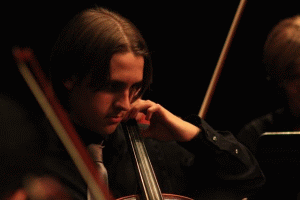Classical Period

(c. 2nd half of 18th and
1st
half of 19th centuries)
COMPOSERS
C.P.E. Bach (the "herald" of
the
period)
Haydn, Mozart & Beethoven
(all
Austrian)
Salieri, Bocherini, Clementi (all
Italian)
and Gluck (German)
FORM
ternary form, minuet &
trio
form, episodical form,
sonata form, modified sonata
form,
scherzo
rondo, sonata rondo
sonata
symphony
chamber music
(trios, quartets, quintets,
sextets and octets)
rondo
sonata rondo
concerto
opera
(add trio, quartet, double
quartet,
sextet, octet)
lieder
DEVICES
rhythmic extension:
a. extended cadence - repeating
final chord
b. repetition of entire
cadence
c. postponing final cadence by
interruption or delay
d. repeating bars in middle of
a phrase by sequence
e. doubling the length of notes
rhythmic contraction:
a. overlapping of parts (stretto)
-
also found in the fugue of the
baroque period
b. shortening the length of notes
coda
codetta
cadenza
Alberti bass (ostinato)
INSTRUMENTS
establishment of the symphony
orchetra
-
introduction of clarinets,
trombones.
tuba, cymbals, snare drum, bass drum
embedded track: 9th Symphony
(Beethoven)
finale
INDEX